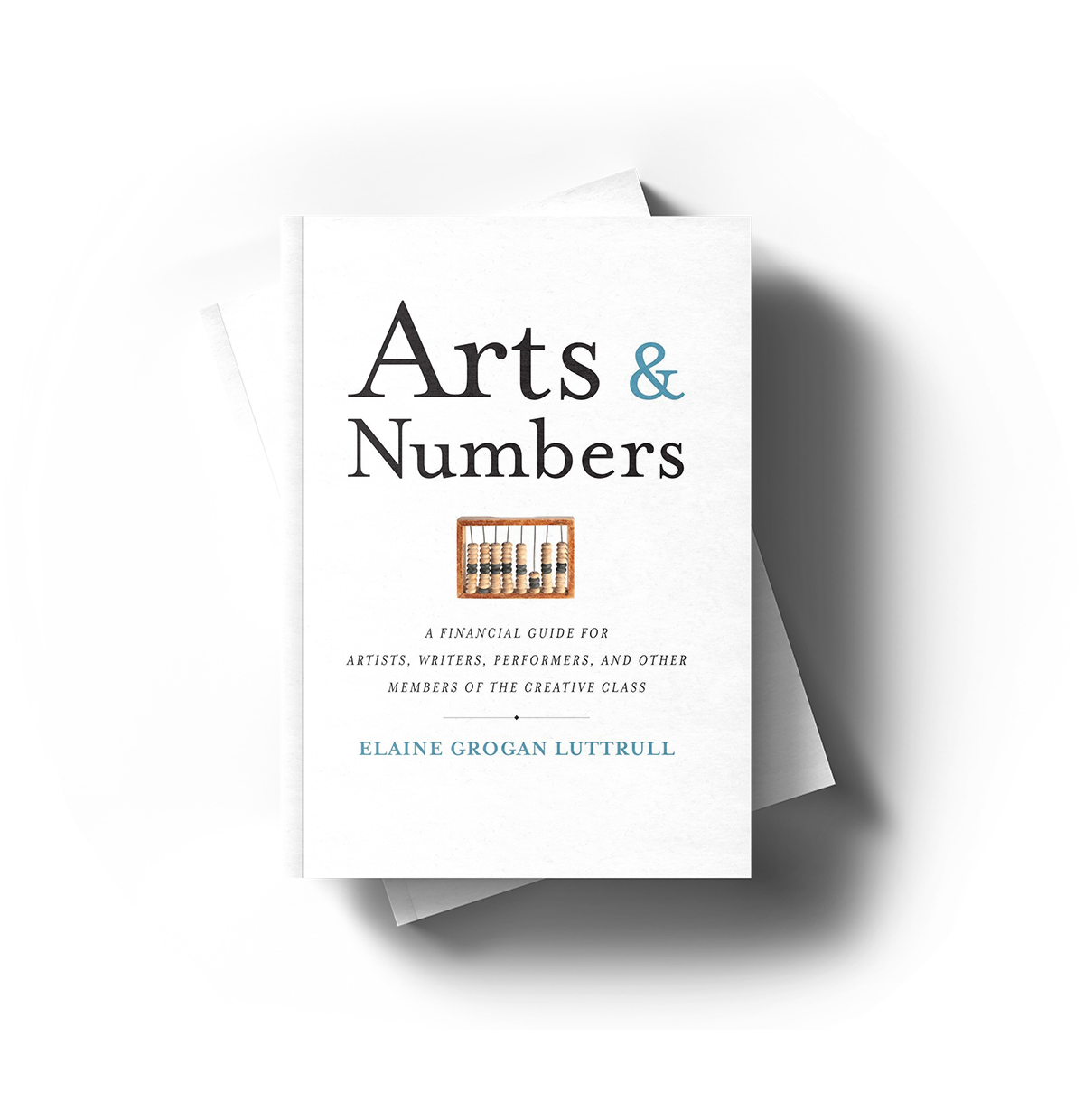October 2, 2023 • Newsletter
THIS MONTH’S MONEY MESSAGE: RETIRE
“Retire? I don’t see myself doing that.”
His partner looked on, dismayed, not understanding the idea of *not* retiring.
“I think I’ll keep creating forever,” he confirmed.
“Retirement” doesn’t look like a traditional retirement in the arts. (And frankly, “retirement” doesn’t really look like it used to for most folks either.) But a future phase of life is still coming, and it is still worth planning for. After all, the plan should reflect what you want and need based on how your future phase unfolds. It should never look like a standard solution applied to all.
And, as a self-employed creative individual, there are plenty of strategies you can use to help work towards your retirement goals at a pace that is right for you.
Let’s start with your net earnings from your creative business this year.
Do you know what that number is? If you are struggling with coming up with this number, start by organizing your data for the year. Since we’re getting close to the end of the year, you probably have a much better idea of where you might end up. It won’t be perfect, but it doesn’t have to be.
This number can help you tell what type of contribution might make sense for you this year.

Which retirement savings plan is right for me?
First, if you have a job that comes with retirement benefits – especially matching benefits where you contribute a set percentage and they contribute as well – take full advantage of these benefits. The match is essentially free money, and you should take the free money. Even if there is no match, having a small contribution come directly from your paycheck can make it easier (and less painful) to save.
What If I Don’t Have a Matching Program?
If you are able to save up to $6,500 for retirement this year, an IRA is probably your best choice. In 2023, you can contribute up to $6,500 to either a Traditional or a Roth IRA as long as you have earned income, and these are easy to set up with your preferred bank or financial institution.
Quick Tip: The main difference between a Traditional IRA and a Roth IRA is when you pay the taxes: Later (for a Traditional IRA) versus now (for a Roth). There are pros and cons to each, so be sure to research the tax structure that will best suit your goals.
What if I have more than $6,500 to contribute this year?
If you are able to save more than $6,500 for retirement this year, you may be interested in another type of plan that has a higher contribution limit. Both a SEP-IRA and Solo 401(k) allow for higher contributions.
By the numbers: SEPs & SOLOs
SEP-IRAs and Solo 401(k)s allow for business contributions that roughly equate to 20% of net business earnings. Let’s pretend your income was $55,000 and your expenses were $15,000 for 2023. That gives you net business earnings of $40,000, and you could contribute up to about $8,000 to a SEP-IRA or a Solo 401(k) from the business.
Plus, with a Solo 401(k), you can contribute up to the elective deferral limit ($20,500 for 2023). And with a SEP-IRA, you can contribute to an IRA separately ($6,500 for 2023).
In both cases (assuming you had the funds to do this), your retirement contribution would be much higher than you could save using an IRA alone. These plans are more expensive to operate, though, so chat with someone who understands your situation to see what makes the most sense for you.
As you check in with your retirement savings this month, here are some things to know, do, and believe:

Know: Your retirement savings goal for the year.
Aiming for 10-20% of your income is a great strategy. But always remember: Any savings is good savings!

Do: Contribute to the retirement vehicle that makes the most sense for you.
Options include a Traditional or Roth IRA, something through your employer (maximize this!), or something like a SEP-IRA or Solo 401(k) based on your own business earnings.

Believe: You can save for retirement as someone who is self-employed in the arts.
And remember, you can define what “retirement” looks like for you… It could be an extended self-funded residency or a prolonged sabbatical. Retirement doesn’t have to mean golf and travel. But you can do that too if you’d like.
WHAT WE’RE DOING
This month is a busy one with orientation for the new Joan Mitchell fellows (have you met them yet?), and work with the Cleveland Institute of Art’s graduating seniors and New England Conservatory’s alums.
Plus, we hosted a financial wellness conversation with a new partner: The Loom Marketplace, serving heritage-based artists in the southwestern region. (If you are looking for some holiday gifts for loved ones, Loom Marketplace is an incredible option.)
WHAT WE’RE TALKING ABOUT
Retirement! We’re talking about retirement. We’re running numbers, explaining nuances of plans, and connecting folks to resources to get set up and running for 2023.
CREATIVE COACHING (1 HOUR, $125)
If you’d like to chat with me to answer your own questions, feel free to find a time that works with your schedule. Fair warning: These slots are full (ish) for the next month or so.
RETIRE
It can be overwhelming to dig into some of the technical details of retirement, but remember to let your own numbers drive your needs. Take your time. You’ve got all the time you need.
![]()



